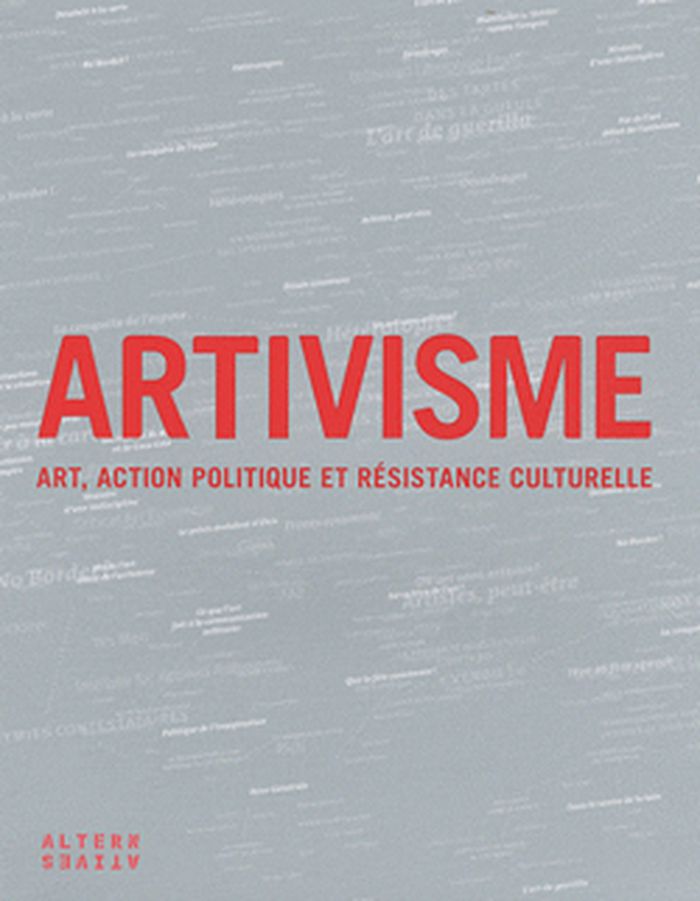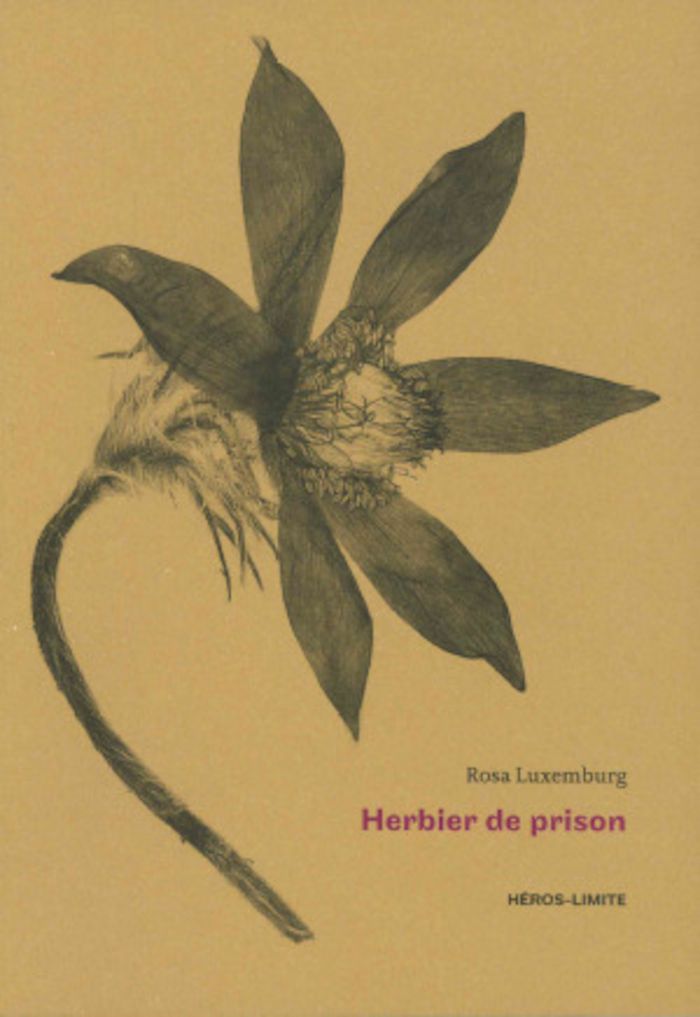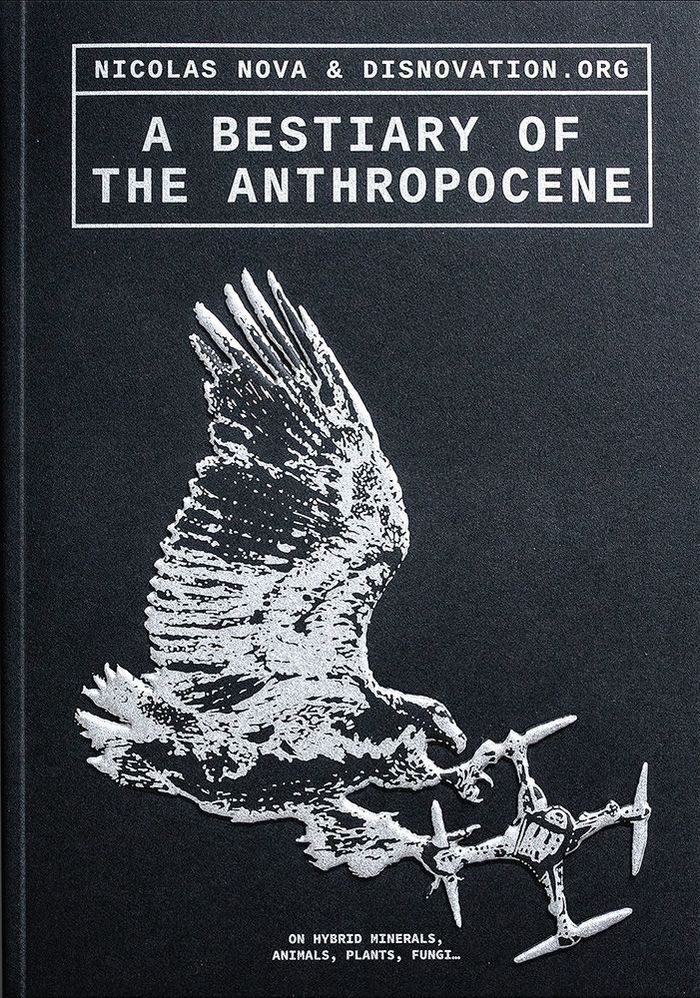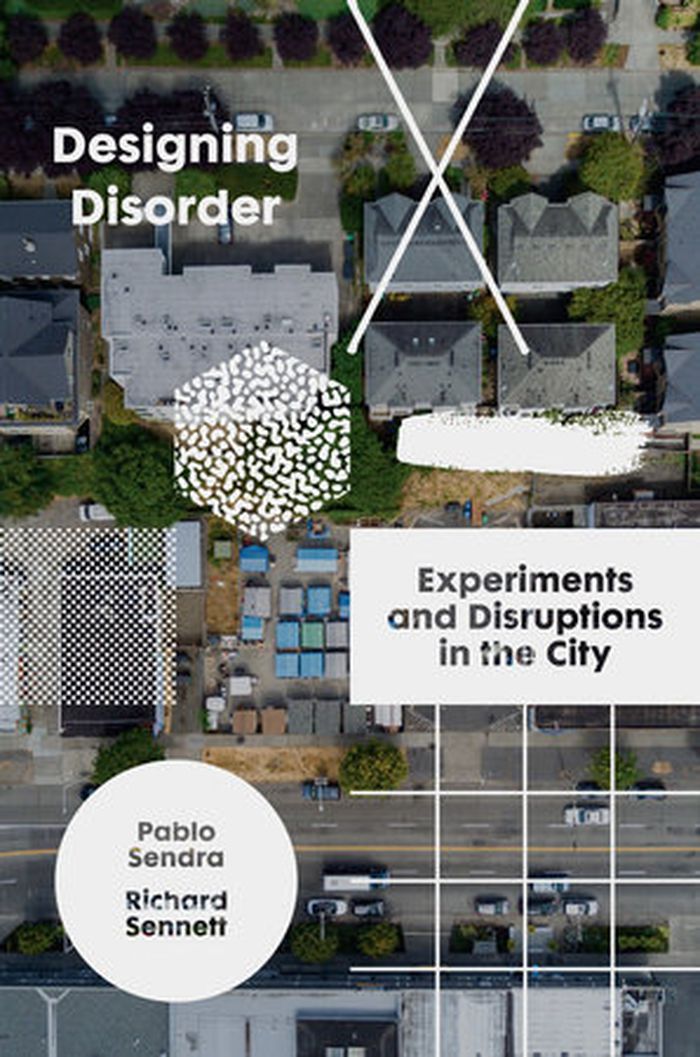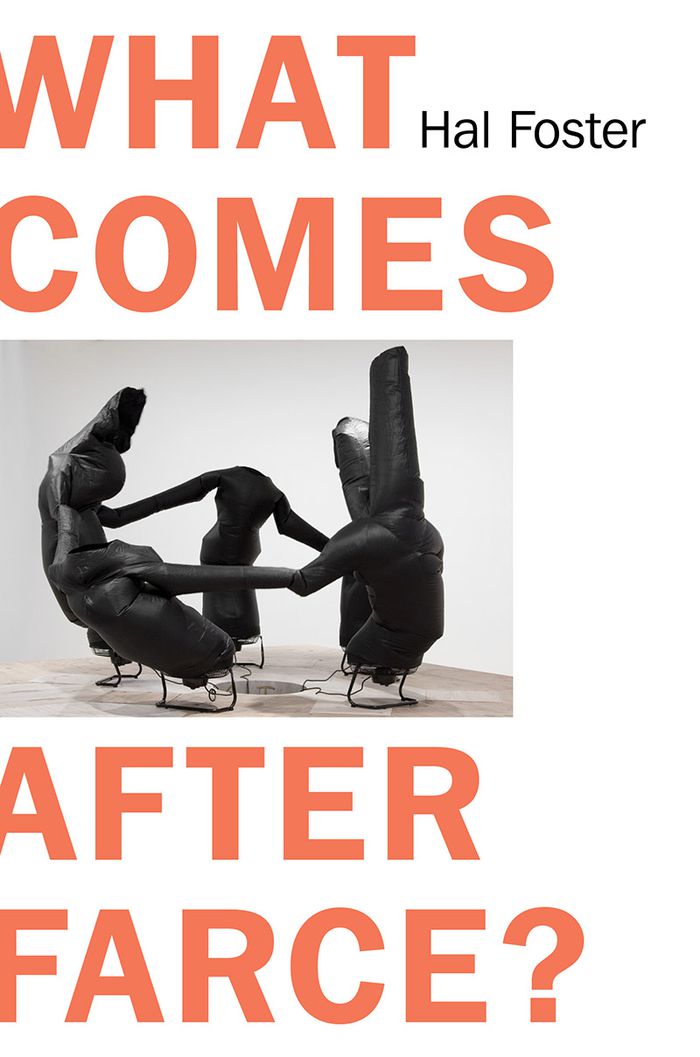$39.95
(disponible sur commande)
Résumé:
Alternately lauded as the future of architecture or dismissed as pure folly, revolving buildings are a fascinating missing chapter in architectural history with surprising relevance to issues in contemporary architectural design. Rotating structures have been employed to solve problems and create effects that stationary buildings can't achieve. Rotating buildings offered(...)
Revolving Architecture: a history of buildings that rotate, swivel, and pivot
Actions:
Prix:
$39.95
(disponible sur commande)
Résumé:
Alternately lauded as the future of architecture or dismissed as pure folly, revolving buildings are a fascinating missing chapter in architectural history with surprising relevance to issues in contemporary architectural design. Rotating structures have been employed to solve problems and create effects that stationary buildings can't achieve. Rotating buildings offered ever-changing vistas and made interior spaces more flexible and adaptable. They were used to impress visitors, treat patients, and improve the green qualities of a structure by keeping particular rooms in or out of the sun. The follow-up to his critically acclaimed book A-frame, Chad Randl's Revolving Architecture: A History of Buildings that Rotate, Swivel, and Pivot explores the history of this unique building type, investigating the cultural forces that have driven people to design and inhabit them. Revolving Architecture is packed with a variety of fantastic revolving structures such as a jail that kept inmates under a warden's constant surveillance, glamorous revolving restaurants, tuberculosis treatment wards, houses, theaters, and even a contemporary residential building whose full-floor apartments circle independently of each other. International examples from the late 1800s though the present demonstrate the variety and innovation of these dynamic structures.
Structures d’ingénierie
livres
$74.95
(disponible sur commande)
Résumé:
The Unknown City takes its place in the emerging architectural literature that looks beyond design process and buildings to discover new ways of looking at the urban experience. A multistranded contemplation of the notion of "knowing a place," it is about both the existence and the possibilities of architecture and the city. An important inspiration for the book is the(...)
Théorie de l’urbanisme
juin 2000, Cambridge, Mass.
The unknown city : contesting architecture and social space
Actions:
Prix:
$74.95
(disponible sur commande)
Résumé:
The Unknown City takes its place in the emerging architectural literature that looks beyond design process and buildings to discover new ways of looking at the urban experience. A multistranded contemplation of the notion of "knowing a place," it is about both the existence and the possibilities of architecture and the city. An important inspiration for the book is the work of Henri Lefebvre, in particular his ideas on space as a historical production. Many of the essays also draw on the social critique and tactics of the Situationist movement. The international gathering of contributors includes art, architectural, and urban historians and theorists; urban geographers; architects, artists, and filmmakers; and literary and cultural theorists. The essays range from abstract considerations of spatial production and representation to such concrete examples of urban domination as video surveillance and Regency London as the site of male pleasure. Although many of the essays are driven by social, cultural, and urban theory, they also tell real stories about real places. Each piece is in some way a critique of capitalism and a thought experiment about how designers and city dwellers working together can shape the cities of tomorrow.
livres
juin 2000, Cambridge, Mass.
Théorie de l’urbanisme
Artivisme
$73.00
(disponible sur commande)
Résumé:
Quel art, quelle action politique possibles dans une société vouée au marché ? À cette double question, certains artistes et activistes répondent d'un pas de côté : en dehors des disciplines instituées et des routines protestataires, ils inventent des manières d'agir et de créer qui se nouent à l'articulation de la vie, de la performance, de la fête et du jeu. De même que(...)
Artivisme
Actions:
Prix:
$73.00
(disponible sur commande)
Résumé:
Quel art, quelle action politique possibles dans une société vouée au marché ? À cette double question, certains artistes et activistes répondent d'un pas de côté : en dehors des disciplines instituées et des routines protestataires, ils inventent des manières d'agir et de créer qui se nouent à l'articulation de la vie, de la performance, de la fête et du jeu. De même que le queer pose l'existence d'un troisième genre par delà féminin et masculin, de même l'artivisme suggère qu'il existe un troisième terme entre esthétique et politique. C'est l'art festif des collectifs décidés à réenchanter la vie, l'utopie des squats et des zones d'autonomie temporaire, la fronde libertaire des hackers et artistes du Net. Ce sont les détournements du Critical Art Ensemble, de Banksy et du Billboard Liberation Front, les sabotages joyeux de la guérilla pâtissière et des Yes Men, les infiltrations de JR, les performances de Steven Cohen ou Oreet Ashery, les prêches de Reverend Billy... Toutes ces pratiques, dont l'enjeu est d'opposer l'imagination et la créativité à l'ennui, la liberté d'action à la surveillance généralisée, la révolte collective au repli individuel, s'inscrivent dans une galaxie sans frontières...
Théorie de l’art
$71.95
(disponible sur commande)
Résumé:
Omniprésence de l'automobile, artificialisation du sol, vacance des commerces, hyper-surveillance des lieux publics... Pourquoi nos paysages urbains et suburbains sont-ils aussi inhospitaliers ? Face aux transitions à venir, il est urgent de réformer les méthodes du projet urbain. David Mangin et Soraya Boudjenane proposent d'y introduire la notion de rez-de-ville, qui(...)
Rez-de-ville : La dimension cachée du projet urbain
Actions:
Prix:
$71.95
(disponible sur commande)
Résumé:
Omniprésence de l'automobile, artificialisation du sol, vacance des commerces, hyper-surveillance des lieux publics... Pourquoi nos paysages urbains et suburbains sont-ils aussi inhospitaliers ? Face aux transitions à venir, il est urgent de réformer les méthodes du projet urbain. David Mangin et Soraya Boudjenane proposent d'y introduire la notion de rez-de-ville, qui permet de penser ensemble les espaces publics et les intérieurs d'îlots, les rez-de-chaussée et les réseaux enterrés, le cadre bâti et les pratiques urbaines. Suivant un même protocole graphique, une grande enquête comparative examine les rez-de-ville sur quatre continents, d'Ahmedabad à Brasilia en passant par Beyrouth, Rabat, Kinshasa, Sao Paulo, Singapour ou le Grand Paris. De cet inventaire international sont tirées des perspectives concrètes pour faire la ville autrement : organiser des itinéraires plutôt que planifier des périmètres, développer des figures d'intériorité, cours, patios ou passages, plutôt que des îlots ouverts, ajuster le degré d'intimité du rez-de-chaussée selon les activités qu'il abrite, déployer les usages du rez-de-ville en enrichissant ses dispositifs architecturaux. Ni atlas, ni manuel, ni traité, tout cela à la fois, l'ouvrage se conclut par un vade-mecum aussi utile au concepteur qu'au décideur pour rendre la ville à nouveau passante, poreuse et profonde.
Théorie de l’urbanisme
$67.95
(disponible sur commande)
Résumé:
Quoi de plus iconoclaste qu’un herbier composé entre quatre murs, sans l’étendue de la nature? Comme une contradiction dans les termes. « L’herbier de prison » de Rosa Luxemburg est une archive sans équivalent. Troublante et attachante, sa fragilité et son histoire en font un témoignage de résistance et d’évasion, une fabrique de formes et de joie, un document sur le(...)
Herbier de prison : 1915-1918
Actions:
Prix:
$67.95
(disponible sur commande)
Résumé:
Quoi de plus iconoclaste qu’un herbier composé entre quatre murs, sans l’étendue de la nature? Comme une contradiction dans les termes. « L’herbier de prison » de Rosa Luxemburg est une archive sans équivalent. Troublante et attachante, sa fragilité et son histoire en font un témoignage de résistance et d’évasion, une fabrique de formes et de joie, un document sur le sentiment politique de la nature, fondement de toute écologie. Composé de sept cahiers datés d’avril 1915 à octobre 1918, l’herbier a pu être réalisé par la révolutionnaire emprisonnée grâce à l’amitié sans faille de quelques femmes, ses amies intimes dont la féministe Clara Zetkin. Au-delà des quelques fleurs et mauvaises herbes de la cour de la prison que Rosa glane lorsqu’elle sort sous surveillance, ce sont ses proches qui lui envoyèrent par lettres des spécimens séchés ou des bouquets fleurs fraîches qu’elle-même pressait. Aux planches de l’herbier répondent ainsi tout une correspondance où il est question de botanique, de nature, de romantisme allemand, d’amour de toutes créatures, et cela, « en dépit de l’humanité ». Rosa Luxemburg ne cesse d’encourager ses proches à garder leur joie de vivre et leur gaieté alors que les nuages qu’elle entraperçoit par une fenêtre à barreaux se chargent des couleurs de la guerre et de l’acier.
Expositions en cours
$47.95
(disponible sur commande)
Résumé:
Plastiglomerates, surveillance robot dogs, fordite, artificial grass, antenna trees, COVID-19, decapitated mountains, drone-fighting eagles, standardized bananas: all of these specimens—some more familiar than others—are examples of the hybridity that shapes the current landscapes of science, technology and everyday life. Inspired by medieval bestiaries and the(...)
A bestiary of the Anthropocene. Hybrid plants, animals, minerals, fungi, and other specimens
Actions:
Prix:
$47.95
(disponible sur commande)
Résumé:
Plastiglomerates, surveillance robot dogs, fordite, artificial grass, antenna trees, COVID-19, decapitated mountains, drone-fighting eagles, standardized bananas: all of these specimens—some more familiar than others—are examples of the hybridity that shapes the current landscapes of science, technology and everyday life. Inspired by medieval bestiaries and the increasingly visible effects of climate change on the planet, French researcher Nicolas Nova & art collective DISNOVATION.ORG provide an ethnographic guide to the ''post-natural'' era in which we live, highlighting the amalgamations of nature and artifice that already co-exist in the 21st century. A sort of field handbook, ''A bestiary of the Anthropocene'' aims to help us orient ourselves within the technosphere and the biosphere. What happens when technologies and their unintended consequences become so ubiquitous that it is difficult to define what is “natural” or not? What does it mean to live in a hybrid environment made of organic and synthetic matter? In order to answer such questions, Nova & DISNOVATION.ORG bring their own research together with contributions from collectives such as the Center for Genomic Gastronomy and Aliens in Green as well as text by scholars and researchers from around the world. Polish graphic designer Maria Roszkowska provides illustrations.
The Urban Archetypes of Jane Jacobs and Ebenezer Howard: Contradiction and meaning in city form
$80.00
(disponible sur commande)
Résumé:
Ebenezer Howard, an Englishman, and Jane Jacobs, a naturalized Canadian, personify the twentieth century’s opposing outlooks on cities. Howard had envisaged small towns, newly built from scratch, fashioned on single family homes with small gardens. Jacobs embraced existing inner-city neighbourhoods emphasizing the verve of the living street. From Howard’s idea, the(...)
The Urban Archetypes of Jane Jacobs and Ebenezer Howard: Contradiction and meaning in city form
Actions:
Prix:
$80.00
(disponible sur commande)
Résumé:
Ebenezer Howard, an Englishman, and Jane Jacobs, a naturalized Canadian, personify the twentieth century’s opposing outlooks on cities. Howard had envisaged small towns, newly built from scratch, fashioned on single family homes with small gardens. Jacobs embraced existing inner-city neighbourhoods emphasizing the verve of the living street. From Howard’s idea, the American Dream of garden suburbs had emerged, yet his conceptualization of a modern city received criticism for being uniform and alienated from the rest of the city. Similarly, at the turn of the new century, Jacobs’ inner-city neighbourhoods came to be recognized as the result of commodification, vacillating between poverty and newly discovered hubs of urban authenticity. Presenting Howard and Jacobs within a psychocultural context, ''The urban archetypes of Jane Jacobs and Ebenezer Howard'' addresses our urban crisis in the recognition that ''city form'' is a gendered, allegorical medium expressing femininity and masculinity within two founding features of the built environment: void and volume. Both founding contrasts bring tensions, but also the opportunities of fusion between pairs of urban polarities: human scale against superscale, gait against speed, and spontaneity against surveillance. Jacobs and Howard, in their respective attitudes, have come to embrace the two ancient archetypes, the Garden and the Citadel, leaving it to future generations to blend their two contrarian stances.
Théorie de l’urbanisme
$33.95
(disponible sur commande)
Résumé:
A manifesto for the Open City: vibrant, disordered, adaptable. In 1970 Richard Sennett published the ground breaking ''The uses of disorder,'' that the ideal of a planned and ordered city was flawed, likely to produce a fragile, restrictive urban environment. Fifty years later, Sennett returns to these still fertile ideas and alongside campaigner and architect, Pablo(...)
Designing disorder: experiments and disruptions in the city
Actions:
Prix:
$33.95
(disponible sur commande)
Résumé:
A manifesto for the Open City: vibrant, disordered, adaptable. In 1970 Richard Sennett published the ground breaking ''The uses of disorder,'' that the ideal of a planned and ordered city was flawed, likely to produce a fragile, restrictive urban environment. Fifty years later, Sennett returns to these still fertile ideas and alongside campaigner and architect, Pablo Sendra, sets out an agenda for the design and ethics of the Open City. The public spaces of our cities are under siege from planners, privatisation and increased surveillance. Our streets are becoming ever more lifeless and ordered. What is to be done? Can disorder be designed? Is it possible to maintain the public realm as a flexible space that adapts over time? In this provocative essay Sendra and Sennett propose a reorganisation of how we think and plan the social life of our cities. What the authors call 'Infrastructures of disorder' combine architecture, politics, urban planning and activism in order to develop places that nurture rather than stifle, bring together rather than divide up, remain open to change rather than closed off. The book proves that ideas of disorder are still some of the most radical and transformative in debates on 21st century cities.
Théorie de l’urbanisme
What comes after farce?
$33.95
(disponible sur commande)
Résumé:
If farce follows tragedy, what follows farce? Where does the double predicament of a post-truth and post-shame politics leave artists and critics on the left? How to demystify a hegemonic order that dismisses its own contradictions? How to belittle a political elite that cannot be embarrassed, or to mock party leaders who thrive on the absurd? How to out-dada President(...)
What comes after farce?
Actions:
Prix:
$33.95
(disponible sur commande)
Résumé:
If farce follows tragedy, what follows farce? Where does the double predicament of a post-truth and post-shame politics leave artists and critics on the left? How to demystify a hegemonic order that dismisses its own contradictions? How to belittle a political elite that cannot be embarrassed, or to mock party leaders who thrive on the absurd? How to out-dada President Ubu? And, in any event, why add outrage to a media economy that thrives on the same? 'What Comes After Farce?' comments on shifts in art, criticism, and fiction in the face of the current regime of war, surveillance, extreme inequality, and media disruption. A first section focuses on the cultural politics of emergency since 9/11, including the use and abuse of trauma, paranoia, and kitsch. A second reviews the neoliberal makeover of art institutions during the same period. Finally, a third section surveys transformations in media as reflected in recent art, film, and fiction. Among the phenomena explored here are “machine vision” (images produced by machines for other machines without a human interface),“operational images” (images that do not represent the world so much as intervene in it), and the algorithmic scripting of information so pervasive in our everyday lives.
Théorie/ philosophie
$33.95
(disponible sur commande)
Résumé:
Contemporary engagements with documentary are multifaceted and complex, reaching across disciplines to explore the intersections of politics and aesthetics, representation and reality, truth and illusion. Discarding the old notions of “fly on the wall” immediacy or quasi-scientific aspirations to objectivity, critics now understand documentary not as the neutral picturing(...)
février 2016
Documentary Across Disciplines
Actions:
Prix:
$33.95
(disponible sur commande)
Résumé:
Contemporary engagements with documentary are multifaceted and complex, reaching across disciplines to explore the intersections of politics and aesthetics, representation and reality, truth and illusion. Discarding the old notions of “fly on the wall” immediacy or quasi-scientific aspirations to objectivity, critics now understand documentary not as the neutral picturing of reality but as a way of coming to terms with reality through images and narrative. This book collects writings by artists, filmmakers, art historians, poets, literary critics, anthropologists, theorists, and others, to investigate one of the most vital areas of cultural practice: documentary. Their investigations take many forms—essays, personal memoirs, interviews, poetry. Contemporary art turned away from the medium and toward the world, using photography and the moving image to take up global perspectives. Documentary filmmakers, meanwhile, began to work in the gallery context. The contributors consider the hybridization of art and film, and the “documentary turn” of contemporary art. They discuss digital technology and the “crisis of faith” caused by manipulation and generation of images, and the fading of the progressive social mandate that has historically characterized documentary. They consider invisible data and visible evidence; problems of archiving; and surveillance and biometric control, forms of documentation that call for “informatic opacity” as a means of evasion.

